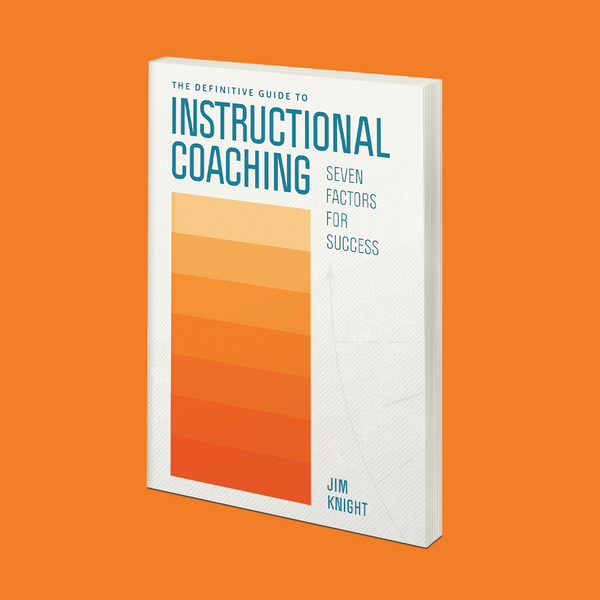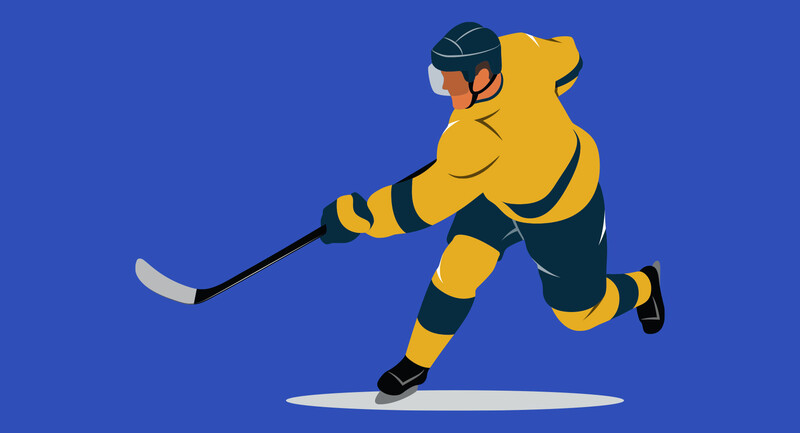When I was a child growing up in Canada, I wanted to be a hockey player more than anything else. My parents bought me my first skates when I was two years old. My father then took me to the frozen pond on our farm and showed me what to do.
Dad was a real athlete. He skated with strong, confident strides, and he handled the puck with power and finesse. I loved watching him play. He was also a great coach. He showed me how to use the edges of my skates to turn and how to hold my hockey stick to cushion the puck when I received a pass. Then he would watch me and give me very precise feedback. "You're holding the stick too tight," he'd say. His feedback taught me how to play the game. I call the kind of feedback my father gave top-down feedback, meaning the coach, seen as possessing the key knowledge, is directing the interaction from the top and passing that knowledge down to the other person.
Why Top-Down Feedback Often Fails
Years later, when I started studying instructional coaching, I assumed coaches would give top-down feedback. An expert coach would tell less-experienced teachers how to improve (just as my dad helped me improve in hockey). And research seemed to backed me up: John Hattie's analysis (2009) identified feedback as one of the most powerful teaching strategies for increasing learning, with an impressive .73 effect size.
So when my colleagues and I at The University of Kansas Center for Research on Learning started studying instructional coaching, we assumed this "top-down" approach is how we should talk with teachers about data (such as the student writing samples we analyzed or our observations of a teacher's lesson). We were respectful but clear, explaining what teachers did right and wrong and suggesting what they needed to change to get better. We realized quickly, however, that top-down feedback often made learning conversations more difficult, not easier. We learned that, as Marcus Buckingham and Ashley Goodall (researchers on work performance) write (2019), "Telling people what we think of their performance doesn't help them thrive and excel, and telling people how we think they should improve actually hinders learning."
Top-down feedback, I began to realize, was very helpful when there was a clear right and wrong way to do a task, such as when my dad taught me exactly how to skate backwards or take a wrist shot. But it wasn't helpful (or appreciated) when I tried it to discuss the complex environment of teachers' classrooms.
Buckingham and Goodall (2019) identify three false assumptions behind top-down feedback that explain why such feedback often fails:
Assumption 1: Other people are more aware than you are of your weaknesses. So the best way they can help you is to show you what you cannot see for yourself.
Assumption 2: The process of learning is like filling up an empty vessel: You lack certain abilities you need to acquire, so your colleagues should teach them to you.
Assumption 3: Great performance is universal, analyzable, and describable. Once defined, greatness can be transferred from any one person to another.
These assumptions imply that to improve, teachers should be given a standard set of recommendations. But that oversimplifies the complexities of the classroom and positions teachers as passive receivers of knowledge.
Two Equals Talking Together
Fortunately, there is another way to talk with teachers about data—what I refer to as the Collaborative Exploration of Data. During this kind of conversation, coach and teacher interact as equals, engaging in a dialogue about the data, which functions as a third point for their conversation.
To better understand the Collaborative Exploration of Data, imagine two friends in a museum looking at Mark Rothko's painting "Orange and Yellow." They might engage in a back-and-forth discussion, listening to each other and asking questions ("What do you think it means?" "Do you like it?" "Have you seen other paintings by Rothko?"). They openly share what they think and, if things go well, both will be energized by the conversation. No one tries to tell the other person what to see. There's no empty vessel to be filled, just two equals thinking together.
The coach shouldn't tell the teacher what data means, but ask questions and listen, trying to think with the teacher.
Coaching conversations are goal-directed, so they have a different focus than friends talking about art. But they should still feel and sound a lot like two friends talking about a painting. The coach shouldn't tell the teacher what data means, but ask questions and listen, trying to think with the teacher.
In my 2007 book Instructional Coaching, Tricia Skyles, an instructional coach on our research project, describes what it's like when she collaboratively explores data with someone. Although Tricia's words aren't the only way one might talk with a teacher in doing this collaborative approach, they show the general idea:
I turn it into a question first. I lay out my data, usually on an observation form, and say, "Well, here's everything that I saw. How do you think the lesson went? What did you think went really well in the lesson?" and they'll tell me. Then I'll say, "OK, now based on either your experience or this form we've got, what do you think were the components that made that go really well? That made the difference?" And then we'll see, does that match up with what I observed, because I may have missed something. Then I ask, "OK, what do you think some things were either according to your experience or what I have on this observation form … that we … still need to work on as a team?" And I let them come up with those answers. (p. 124)
Honoring Complexities
Top-down feedback isn't always ineffective. When there really is one way to do a practice and a teacher wants to know exactly how to do that practice in the correct way, top-down feedback can be helpful. However, when professional discourse is about the complexities of the classroom, collaboratively exploring data is often more helpful. Sadly, as Robert Kegan and Lisa Laskow Lahey (2001) note, "many a relationship has been damaged and a work setting poisoned by perfectly delivered constructive feedback!" (p. 128).
The Definitive Guide to Instructional Coaching
A blueprint for establishing, administering, and assessing an instructional coaching program centered on seven success factors.










